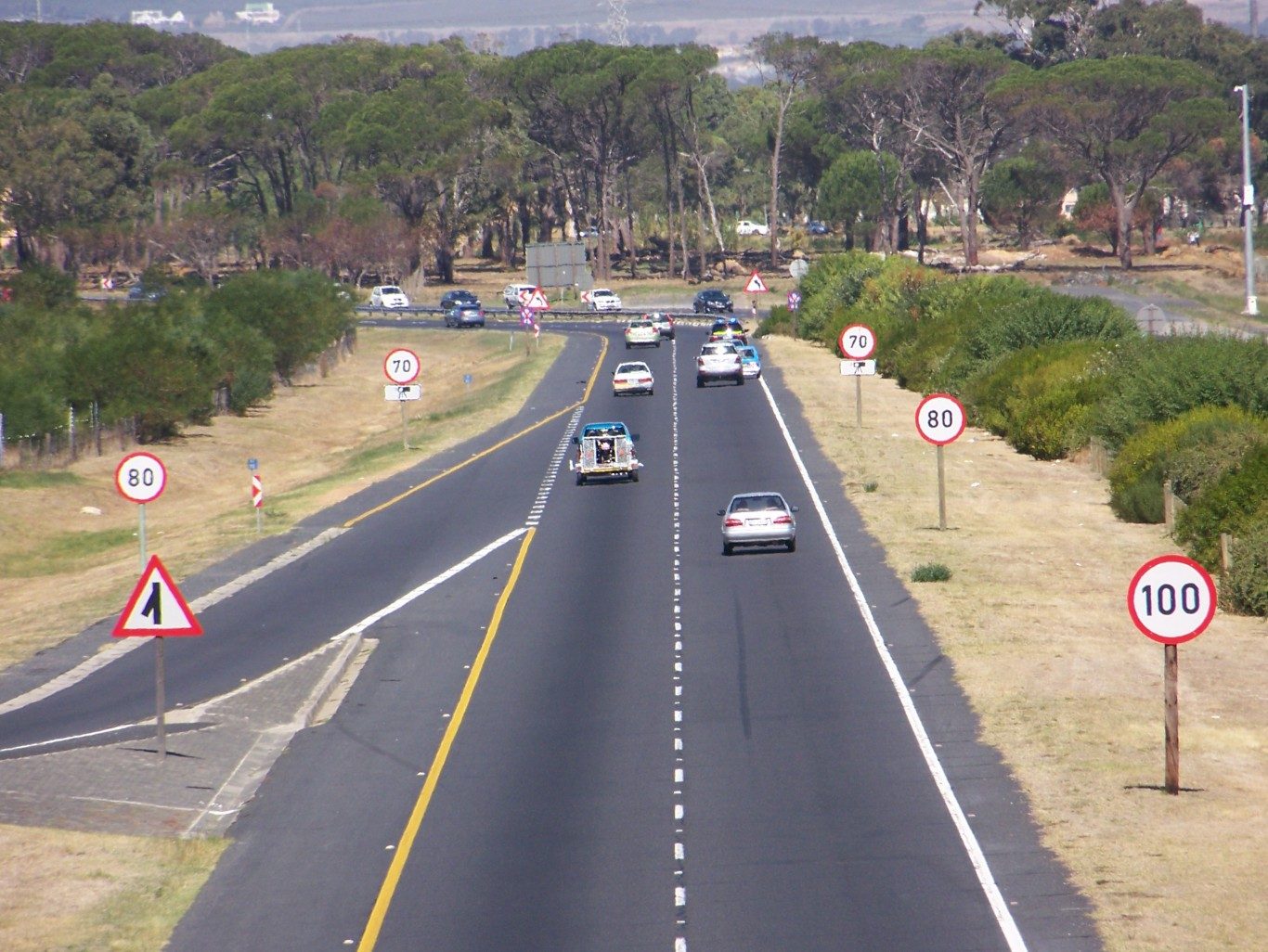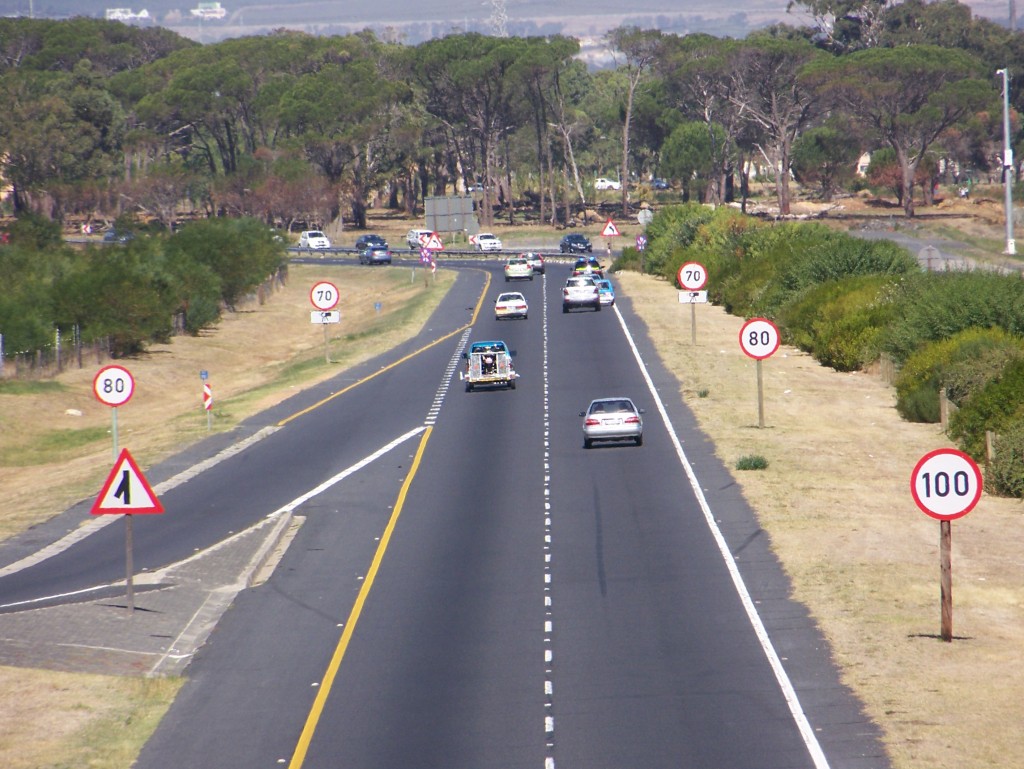Question:
I have a question.
I would be interested to find out for how long / how far a speed limit is valid after the speed limit sign, e.g. there is a 80 km/h sign on the road from Dullstroom to Lydenburg and nothing after that for some 30 km on a typical 120 km/h road.
In built-up areas one could argue that a signed speed limit is valid until the next intersection, as a vehicle turning in from the side road could not be aware of the speed limit. Am I correct?
Answer
No, you are not correct in your assumption of speed limits being applicable from one intersection to another in an urban area. The general speed limit in urban (built up) areas is 60km/h unless there is a speed limit sign to the contrary displayed. Therefore, if the speed limit is not greater or lesser than the general speed limit, no sign at all need be posted. However if the speed limit were to be greater or lesser than the general speed limit then the prescribed sign must be displayed after each and every intersection or adjoining road.
When it comes to a road outside of an urban area, the general speed limit is 100km/h, NOT 120km/h and once again, this applies unless there is a sign posted displaying a lower speed limit. Any speed limit sign that is posted has the effect of setting the speed limit until such time as the limit changes, however on long stretches of road like the one you describe, if there is no speed limit sign posted after an intersection with another road, then the general speed limit would apply.
This having been said, I have noticed in my travels that speed limit signs, like other signs and road markings are often not displayed as is prescribed and this is a very sad situation indeed. This is a sign of decaying infrastructure and what really gets me is that some traffic authorities actually take advantage of the lack of proper signage etc. and fine people for not complying with non-existent signs.
This having been said, there is no excuse for not being aware of what the general speed limit is on our roads and for purposes of absolute clarity, I again define them hereunder:
Howard Dembovsky
Response
Thank you for your very extensive explanation, and that even with midnight oil!
Firstly, yes, I was referring to other than 60 km/h speed limits in urban areas and I see that my assumption with intersections regarding other than 60 km/h is correct – logic rules 🙂
This, of course, throws up another question: what are the boundaries of an urban area? I see grey areas. In Germany, for example, a big yellow rectangular sign with the city/town/village name officially defines the beginning of that boundary and the reverse side with some other information black on yellow the end of this.
My mentioning of 120 km/h was a typo. I am aware of the 100 km/h limit. However, my question remains: if there as a declared and sign boarded speed limit of say 80 km/h and nothing coming on for kilometers, how far is that valid, or how will a magistrate assume it to be “reasonable”?
Another ambiguity: is a traffic participant expected to interpret the unprinted back of a traffic sign, e.g. the octagon of a Stop sign? Again, Germany might show a way with add-on information signs:
Additional reply:
“Midnight oil” is par for the course in my life, I’m afraid.
I am sorry that I could not provide further clarity with respect to the physical distance for which a speed restriction sign is valid. I can only comment on what the law says and I am afraid that South African Traffic Law is full of grey areas and there are a number of serious deficiencies that make it difficult for everyone. Magistrates hold different views on road traffic matters and there is no uniformity amongst them.
There is currently no road traffic sign which indicates the beginning and end of an urban areas and it is left to the public to guess that the area they are in is an urban area. This is problematic, especially where dual carriageways traverse urban or semi-urban areas and a great example of this is Jan Smuts Avenue in Johannesburg. This is a very wide road, with two or more lanes in each direction, divided by a centre island.
Many people automatically assume that the speed limit on this road is higher than it really is, despite the fact that it runs straight through a heavily urbanised and built up area. For some obscure reason, they seem to blank out the frequent signage that shows that the limit is 60km/h, instead choosing to assume that it’s 80 or even 100km/h.
I am afraid that this type of behaviour comes from a culture of motorists who think that they know the law and that they are more qualified to assess what the speed limit should be, rather than what it is. However, motorists are not entirely to blame. William Nicol Drive, which shares similar physical characteristics to Jan Smuts Avenue has a speed limit of 80km/h and it is my belief that this contributes to confusion.
In my opinion, we could easily address and remove confusion by implementing a few basic and very simple principles:
1. Without exception, have speed limits in urban areas of 60km/h, regardless of road width with only one exception;
a. Speed limits around schools and other public places where there is a high risk of pedestrian traffic, particularly children should be 30km/h, once again, regardless of road width and this should prevail for at least 150 metres on either side of such a place.
2. Introduce a derestriction sign which indicates that the general speed limit applies outside of urban areas. The UK and New Zealand and even Zimbabwe have one that looks like this:
South Africa has no derestriction signs defined at all!
3. Introduce informative sign boards like exist in Europe, which remind people and inform visitors to the country what the general speed limits are (you should recognise this):
4. Clearly define the distance for which all signs will be valid so as to remove any confusion and/or latitude for interpretation.
It is my considered opinion that South Africa’s traffic laws, whilst being deficient and full of holes are way too complicated for ordinary people to understand and, coupled with the arrogance of our road users, this contributes to the high level of road fatalities that result. Everyone’s an expert but few understand the first thing about our traffic laws – even so far as failing to understand the basic principles of “keep left, pass right” and “wear a seatbelt and strap your kids in”.
On that note, booster seats are not law in South Africa and in fact, children under 3 years of age are not even regarded as people in South African traffic law. This is why so many people don’t strap their babies and toddlers in, since there is no consequence apart from death or serious injury, which unfortunately doesn’t seem to be a sufficient deterrent for people to exercise common sense. For some bizarre reason, people seem to think that a traffic fine must apply if something is dangerous and even then, if they don’t get caught, it doesn’t matter if they can get away with it.
With respect to the back of road traffic signs, I suppose we could debate signs all day long and still not reach a satisfactory conclusion. In South Africa, we don’t currently erect signs on off-ramps where the reverse reads “wrong way – go back”, and this too is an area of concern.
Best Regards,
Howard Dembovsky
National Chairman – Justice Project South Africa (NPC)
Association Not For Gain | Incorporated as a non-profit company under the Companies Act, 2008

